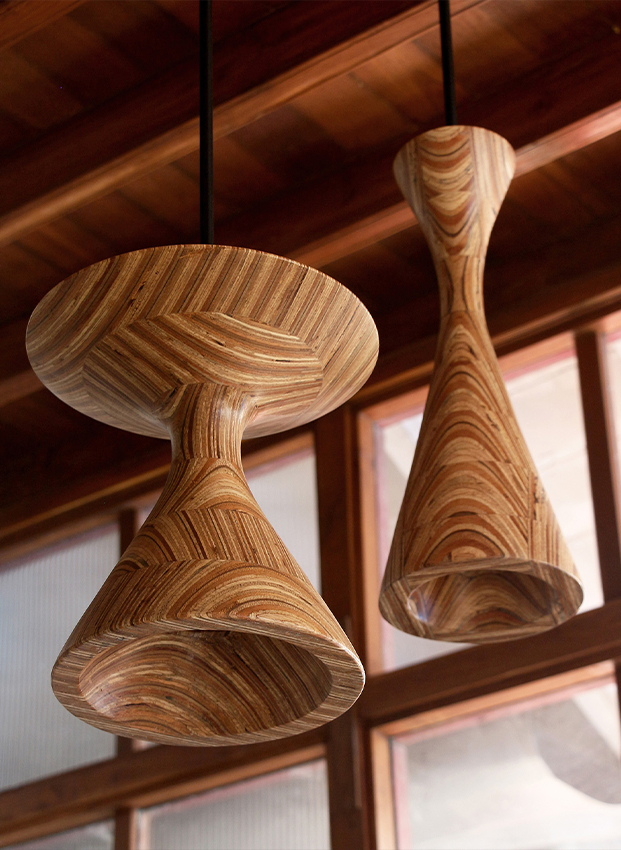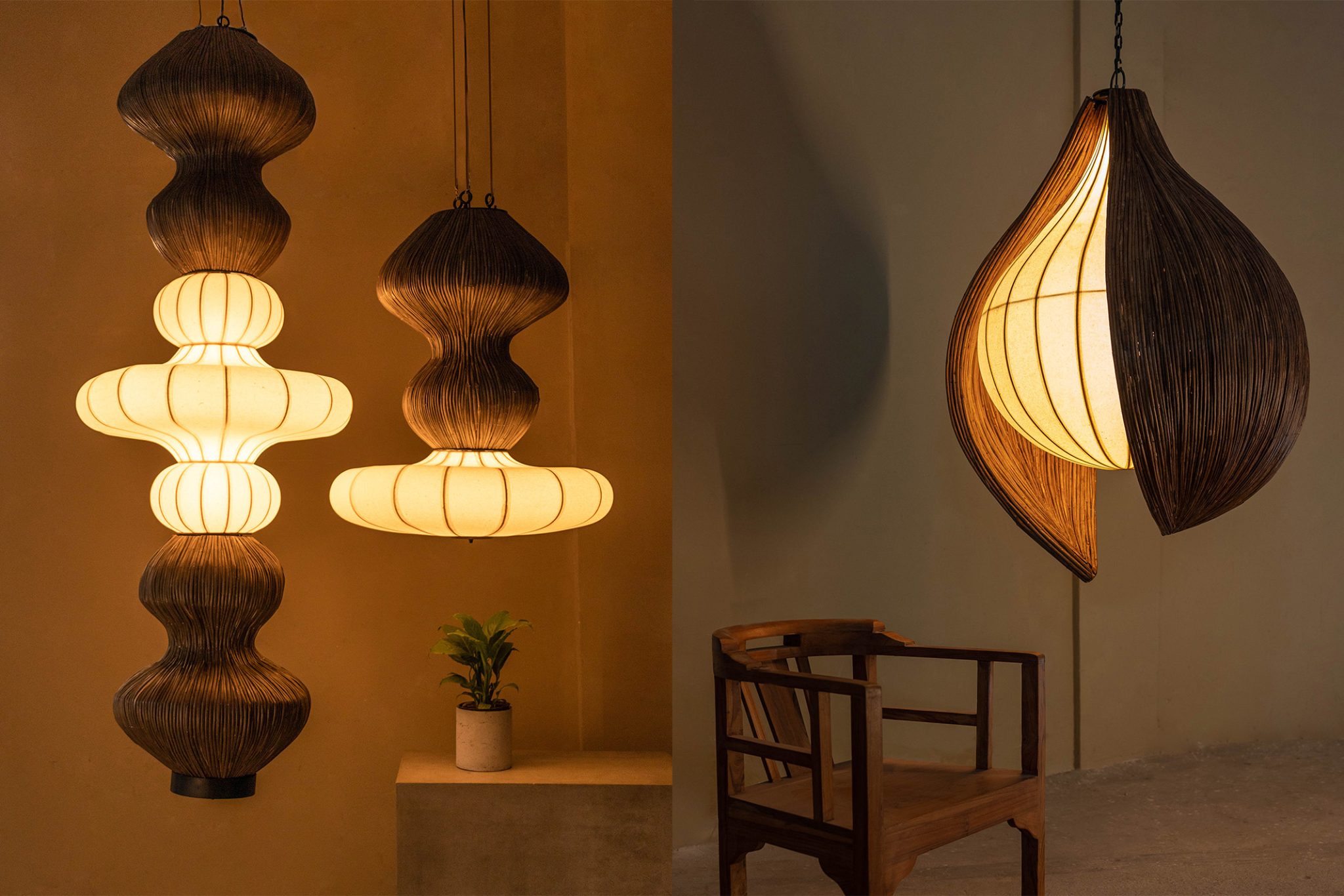The Stories Behind Objects: Tej Chauhan’s Approach To Human-Centric Design
In conversation with DP, British designer Tej Chauhan looks back on how intuition and emotion fueled his groundbreaking creations.
- 26 Nov '24
- 1:28 pm by Virender Singh
The modern, largely Western approach to product design often focuses on theoretical processes that succeed on paper but falter in practice. One underestimated force that quietly shapes intelligent design is intuition—a faculty deeply tied to a designer’s experience. British industrial designer Tej Chauhan understands this well; his instinct acts as a compass, crafting designs that forge an inexplicable connection with their users. For those wandering shopping aisles, a product must evoke a positive response—whether through satisfying functionality, visual appeal, or environmental responsibility. This ability to resonate with people is perhaps the most disruptive skill any designer can develop.
Based between London and Helsinki, Chauhan has been a pioneer of ‘Emotive Industrial Design’ since founding his studio in 2005. His work seamlessly combines technological innovation with human-centred aesthetics, spanning collaborations with global brands like Lexus, Panasonic, and British Airways. With each project, he seeks to craft the ultimate user experience, where instinct and strategy intertwine. Design Pataki recently caught up with Chauhan to reflect on his past work and the ways in which he continues to push creative boundaries while staying grounded in user-centric principles.
Also Read: Unveiling Design Mumbai 2024: A Symphony of Global Inspiration and Indian Artistry

The Nokia Teardrop Model (7600) was released in 2003. Image Credits: Tej Chauhan Studio.
Design Pataki: How do you ensure that your designs resonate with a broad audience, regardless of the brand’s market position?
Tej Chauhan: Imagine you’re shopping for a new toaster, either browsing online or in a store surrounded by twenty different options. What makes you reach for one toaster over another? That’s a fundamental question in my work. I try to find the triggers which create the subconscious, emotional responses drawing someone to pick up one object over the other next to it. How do you capture attention long enough for a second glance? And once you have it, how do you follow through with a beautiful and functional experience, one which feels intuitive and made just for you? This is how we begin to build connections.
DP: Nokia’s ‘Total Product Experience’ (2003) for the 7600 blended physical design with digital content and strategy. How did this holistic approach shape your process?
TC: Great design has always been about more than the physical object. For the Nokia 7600, we aimed to push boundaries by crafting a complete user experience. This included the phone’s physical design, materials and colours, as well as digital elements like graphics, packaging, accessories and even ringtones. It was about creating a seamless experience where every touchpoint told a cohesive story. As the first mainstream 3G phone, the 7600 had to set a standard, and it was thrilling to play a role in shaping both the product and its launch strategy.
Also Read: Art, Tech, & A Bottle Of Coke: In Conversation With Jayesh Sachdev

DP: What was the driving force behind the ‘Colombo Two telephone’ (2008), and how did it represent your early exploration of Emotive Industrial Design?
TC: ‘Colombo Two’ was our first exploration into creating nuanced, emotive forms for high-volume consumer products. At the time, home telephones all followed a uniform, techy aesthetic that felt out of place in home settings. We took the same underlying technology but applied a new visual and tactile philosophy to craft a product that felt harmonious in the home. It was entirely new. The telephone was a massive success, resonating not only with the media but also with retailers—from high-street shops to design boutiques like ‘twentytwentyone’ and ‘Corso Como 10’ in Milan. This broad appeal cemented our studio’s approach: to design strategic, emotive experiences that connect with diverse audiences across sectors.
DP: In your view, why is good design important beyond just being visually satisfying? How does it enhance the user experience?
TC: For me, product design isn’t about creating something just to look beautiful. Visual appeal and functionality are prerequisites, of course, but what I’m truly interested in is building connections. This involves everything—from the look and feel of surfaces to pleasing, intuitive functionality. Designing solely for appearance results in a piece of art, while we’re focused on strategic product experiences to engage audiences and help brands tell stories.
Also Read: Jenny Holzer’s Show At Guggenheim Revisits The Longest LED Sign From 1989

DP: ‘The Ribera Handmade Frame’ (2015) blends futurism with traditional Italian craftsmanship. What inspired this fusion, and how did you balance modern design with timeless artisan techniques?
TC: The Ribera frame began as a passion project. I’ve always been drawn to eyewear and had the opportunity to collaborate with an expert craftsman in the UK who worked with acetate. I wanted to juxtapose a futuristic yet nostalgic design with handmade tradition using vintage Italian acetates, creating an intriguing balance. It’s all about proportion and subtlety—designing in a way that leaves you unsure if the object is old or new. The frame is a celebration of contrasts, a hallmark of my work, and a testament to the timeless appeal of craft.
DP: How do you balance your vision for a product with the client’s brief and expectations?
TC: I work best with a tight brief. The goal is to innovate by stretching those boundaries without breaking them, as going too far risks losing relevance. Sometimes, we end up refining the brief together with the client as we move forward, honing it to make the vision clearer. Once those boundaries are established, that’s when the real excitement begins—exploring those initial ideas and figuring out how we can approach them differently.
Also Read: Unveiling Design Mumbai 2024: A Symphony of Global Inspiration and Indian Artistry

Design Pataki: How did you translate the aesthetic and functional cues of a ‘NikeLab Air Force 1’ sneaker into the design of a Lexus tyre (2019)?
TC: That was one of the most interesting briefs we’ve ever received. It was very focused: Lexus was launching a new car at New York Fashion Week (2019), targeting an urban lifestyle sector, and they had the idea of collaborating with Nike. The brief was simply, “Could you design a tyre inspired by these sneakers?” My first reaction was, “Whoa, what does that even mean?” But as I started sketching, ideas began to flow, and I realized this could be a lot of fun.
Here, we were creating a one-off art piece, an installation. It was liberating to not consider production constraints, though we had to deliver a fully finished product within a few weeks without the chance to prototype, capable of taking the weight of a new two-ton car. I’d worn Air Force 1s before and knew them well—they’re my go-to sneakers—so I felt a personal connection to the project. It turned out to be Lexus’s most successful social media campaign to date.
DP: How do you approach innovation in product design?
Tej Chauhan: Innovation starts with a deep understanding of the brand, their audiences, the current playing field and upcoming technologies. It’s also essential to have a sense of the current landscape—what experiences are already out there. This helps identify areas where we can push boundaries, offering something new, and improved.
Innovation doesn’t always have to be a bold, polarizing leap. It can happen in small, subtle ways.

DP: The design for the True Square Watch for Rado (2020) incorporates tactile elements like leather pillow straps and a “liquid metal” case back. How do these details help create multi-sensory design experiences?
TC: Visiting Rado in the heart of the Swiss watchmaking region was incredibly inspiring. Their blend of high-tech material innovation and traditional craftsmanship informed my approach to the True Square Watch. I wanted the design to tell their story. The matte yellow ceramic case highlighted their material innovation, while the pillowed leather strap provided a handcrafted contrast—a tactile invitation to interact. The liquid metal case back was designed for comfort, adding a soft, luxurious touch. The product was a strategic composition, designed to engage visually and feel wonderful when picked up and worn. It was about creating a connection to tell Rado’s story. A clear example of our Emotive Industrial Design approach, it was a sell-out success and a social media hit.
DP: You mentioned the new Rado watch launching in Delhi. Any interesting anecdotes about this upcoming release?
Tej Chauhan: The best designs come from collaborations where you truly connect with your team. I’m thrilled about continuing my work with Rado, and in February 2025, we’ll unveil the next chapter. While I can’t reveal too much, I can say it will showcase some striking contrasts that highlight Rado’s technologies and craftsmanship in a way you’ve never seen before. Stay tuned—it’s going to be special.


























